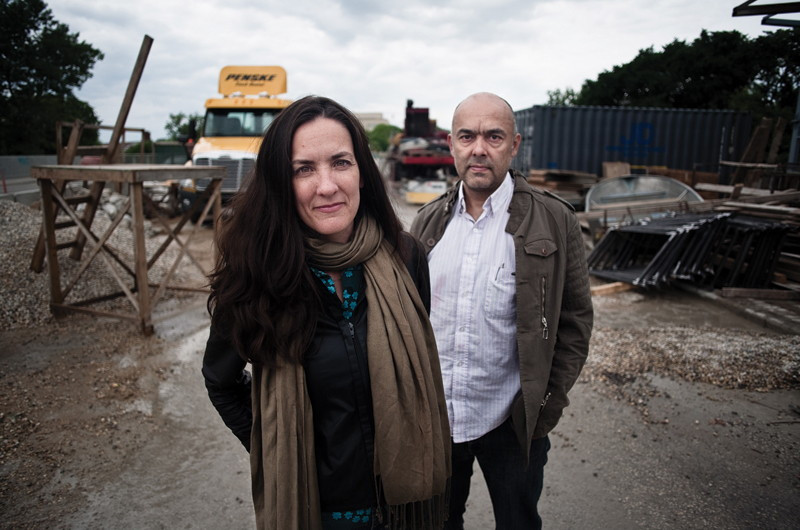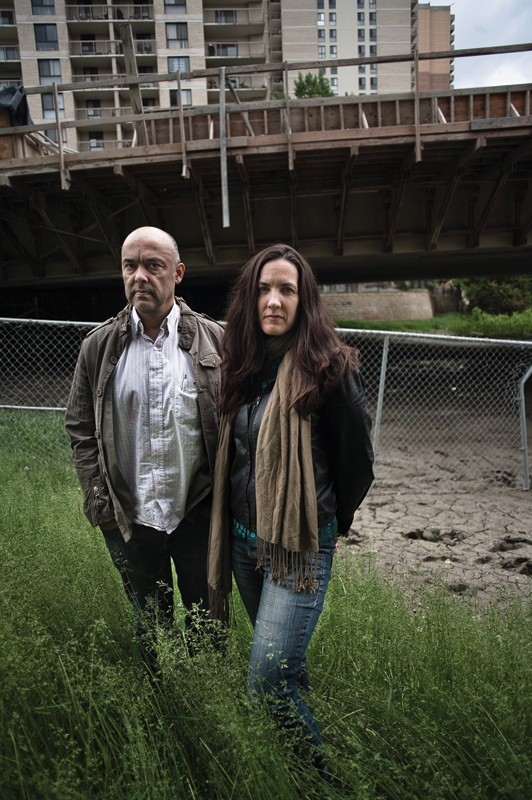Art and infrastructure unite
Osborne Bridge project brings community’s and artists’ input to the drawing board
The congested traffic and unsightly barricades will last for two years, but in the end, Osborne Street will have more than just a rehabilitated bridge.
With support from the Winnipeg Arts Council (WAC) and extensive input from a Neighbourhood Advisory Committee (NAC), the project will incorporate a level of public art that may become the new standard for similar projects in the city.
Matt Chislett, a civil engineer for the City of Winnipeg and project manager for the Osborne Bridge Rehabilitation, said the NAC’s input was essential.
“What we heard from the public was that they didn’t want a cookie-cutter bridge,” he said.
Nick Kowalchuk, executive director of the Gas Station Arts Centre in Osborne Village and a member of the NAC, said the aesthetic nature of the rehabilitated bridge was one of his central concerns.
“If you recall the current bridge, or something like the Disraeli Bridge, they’re very functional but not artistic at all,” Kowalchuk said. “I think that having some artistic input added to the bridge is encouraged.”
To make this particular community aspiration into a reality, the WAC invited certain groups and artists to present their proposals for the bridge.
The council selected Eduardo Aquino and Karen Shanski, both professors of architecture at the University of Manitoba and founding members of the arts, architecture and design practice spmb (São Paulo-Manitoba), to work on the project.
Aquino praised the early and meaningful collaboration between the artists and the engineers.
“The project was very well organized by the Winnipeg Arts Council,” he said. “Usually what happens with architectural or engineering projects is that it’s always the last thing to come in the process, which makes it much more challenging and difficult to find a vocation for the artists in something that’s already done.”
“It’s very true when you actually engage the artists from the very beginning of the project, especially in this case as part of a collaborative design team, we can adapt the art in much more integral ways than something that is just attached to it,” Aquino said.
Chislett agrees.
“In a few other bridges and sites within the city, the WAC has co-operated and we’ve had public art, but it’s always been more of a stand-alone feature and it hasn’t been integrated,” Chislett said.
“ Instead of art just being an afterthought to fix something, or art as a band-aid, art becomes really an integral part of the project. There isn’t a separation between what urban space is and what art is.
Eduardo Aquino, architecture professor, University of Manitoba
“Instead of art just being an afterthought to fix something, or art as a band-aid, art becomes really an integral part of the project,” Aquino said. “There isn’t a separation between what urban space is and what art is.”
Spmb’s approach to the project stems from Aquino’s and Shanski’s extensive experience in working with public art.
“We often say that we are not artists in the studio, we operate in the city,” Aquino said. “Because of that we look for opportunities in the city to generate the art.”
With more than 40 years of experience between them, the two artists have developed an intricate and delicate philosophy that, rather than combining art and architecture, strives to render the difference between them irrelevant.
“Infrastructure as an idea resides in an unspoken, subdued level of perception in terms of the urban space. But what interests us is that we can think of infrastructure as art,” said Aquino. “Our aesthetic approach is to have a very subtle, elegant, discreet presence, which leads to minimalist choices. Everything is embedded into the bridge structure.”
Apart from a purely aesthetic preference, however, the amount of artwork on the bridge will need to show an understanding of those who will be using and enjoying the finished product.
“We find that there is more to public space than public art,” Aquino said.
“I think a successful public art project is the one that would listen as much as possible to as many constituencies as possible,” he added.
“What we find really challenging is to widen the range of possibilities and the range of relationships between the art and the people as much as possible so that people feel directly implicated in the work and validated through the work.”
The community connection will really be the ultimate test for spmb’s contributions.
Kowalchuk said that given the constraints of the nature of the project, he believes it will succeed in this regard.
“I think it will tie in the neighbourhood and the area, but it will be a bit lower key than if it was a new bridge,” Kowalchuk said. “What you have to realize is that the Osborne Bridge is an upgrade and not a reconstruction. With the upgrade it’s somewhat limited in terms of the design of the bridge.”
Aquino acknowledged the engineering constraints of the rehabilitation process, but said: “We are strong advocates for any kind of poetic expression. Every genre of art has a valuable place in society and the culture in general.”
Published in Volume 65, Number 27 of The Uniter (June 29, 2011)








